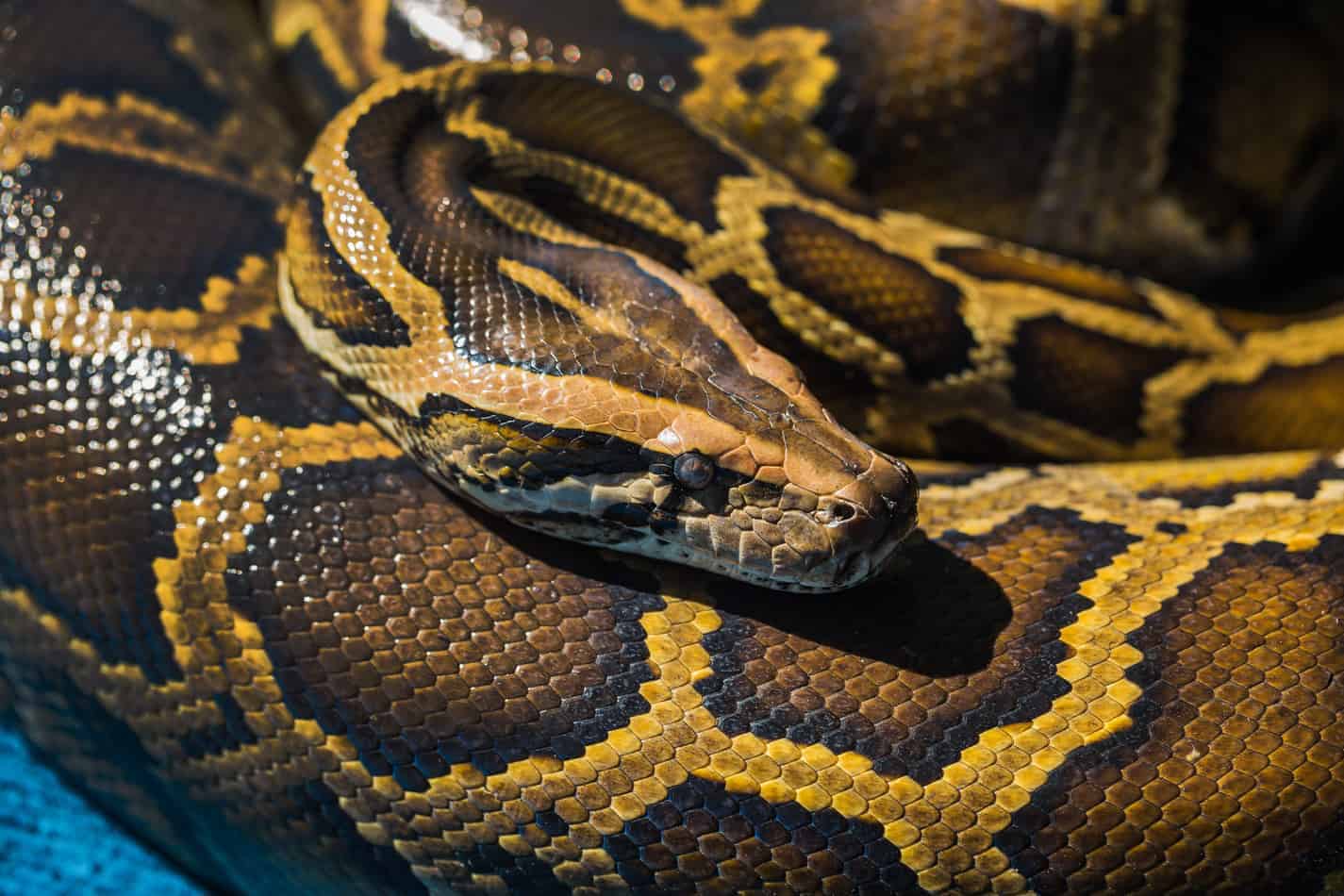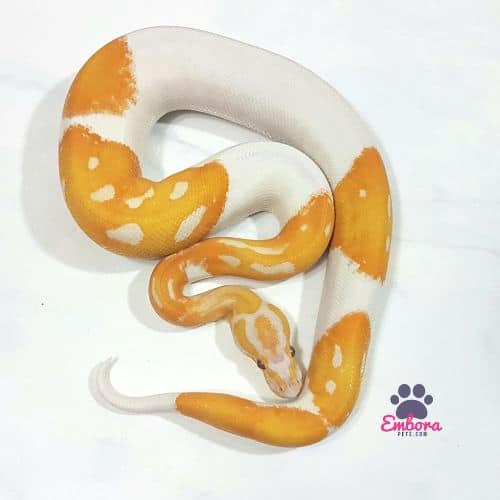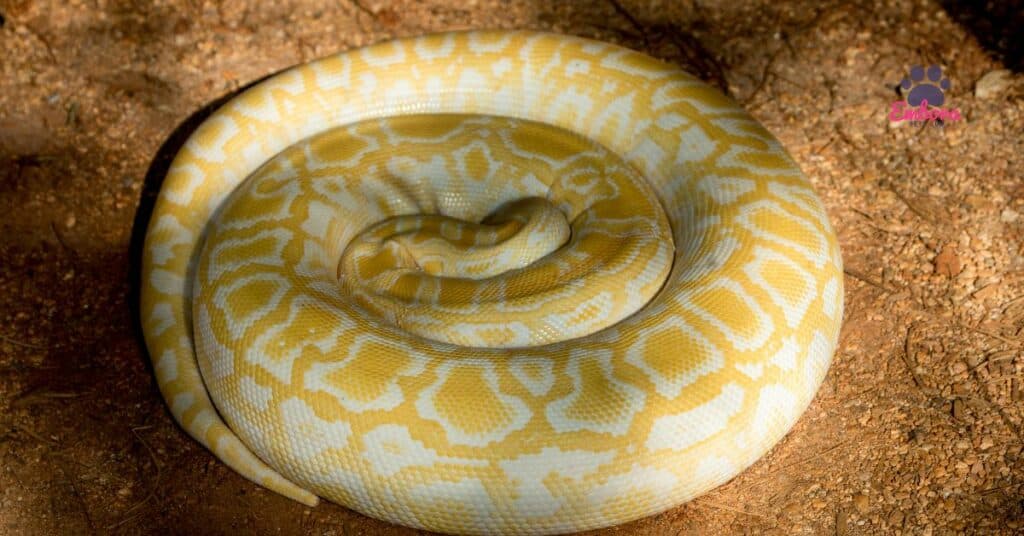Best Temperatures for Keeping a Ball Python
Keeping snake habitats at the right temperature is a finicky. The more I researched pet snakes, the more nuances and intricacies I kept finding for how to keep your snake the happiest and healthiest it could be. Different light-bulbs to get, different environments, different foods- the list goes on.

So, what is the best temperature for keeping a ball python?
The best temperature for the terrarium should be between 78 and 80 degrees Fahrenheit, and they should have a basking area with a temperature between 88 to 96 degrees.
Now that we know what temperature to keep our ball python, what else do we need to know? What tools do we need for heating our snake’s enclosure and how often should we heat it? We want to make sure your ball python is in the best shape it can be in, and all that starts with the correct living space.
Heating
Most snakes need a temperature in the high 70-degree range in order to live comfortably. All snakes also like to warm themselves during the day, whether by ground heat or the heat of the sun. These “basking temperatures” should be about 10 to 15 degrees warmer than that of the rest of the enclosure.
Ball pythons are different than any other snake in the way that they do “bask.” In the wild, you will never see a ball python lying around sunbathing.
Ball pythons hide all day- just like that one kid from The Benchwarmers who was petrified of the sun- preferring to stay in dark places like under trees and rocks. Ball pythons need “belly heat” while most snakes require “basking heat.” They stay warm by staying close to the warm ground.
To best mimic what your ball python wants naturally, you should buy a UTH. An UTH is an under tank heater. These are relatively cheap and available in pet stores and online. Under tank heaters will heat the floor of your snake’s enclosure and they can remain warm this way.
If you don’t get a UTH, a heat lamp will work just fine. Place it about six inches above the top of your snake enclosure and monitor the temperature. A mesh screen in between the snake and the bulb will help prevent burns and just protect the snake in general.
It is extremely important that you keep enough belly heat for your ball python. Because snakes are “cold-blooded,” they cannot regulate their own body temperature. They have to constantly move between different temperature to stay at a happy medium. They bask for a while and get nice and toasty, then move away to cool off for a bit before going back to bask again.
If snakes get too cold, they’ll do exactly the same thing human do if they get too cold. That is, they’ll die. Once they lose enough warmth, they stop moving, and the less they move, the colder they get. It’s a downward spiral not easy to snap out of. That is why it is so important that you keep your ball python at the correct temperature.
If your snake does get too cold, or the heat goes out, there are a few things you can do to heat it up again before it’s too late. You could use just a regular chemical hand warmer from a sporting goods store. Just never place them directly in the enclosure, and especially not directly on the snake. Instead, wrap them in tin foil and duct tape them to the bottom of your tank.
If you’re really in a pinch, you can fill up some water jugs with hot water and place those in the tank. Your snake can get as close as it wants to the jug, and can move back and forth, just like we talked about earlier. Your snake will know what is best for it, so it’s best to just leave it to its own devices (just make sure to keep checking on it!).
If you don’t have any hot water, your body heat can also work. It’s the same concept of hugging someone who’s cold. Just hold your snake close to your torso, as that’s where most of your own body heat is, and cuddle until your snake is done.

Humidity
Ball pythons are not native to the United States of America and are therefore not built for the humidity of the North and West parts of our country. Ball pythons come from South Africa, where it’s slightly more humid and quite a bit warmer.
The humidity in your home is likely between 35% and 45%. A ball python needs something more along the lines of 55% to 60%. This is the ideal humidity for your snake to have the healthiest skin. The healthier its skin is, the easier it will be able to shed, and the happier it will be.
It is important that the humidity of your ball python’s enclosure never drops below 50% humidity. Again, your snakes and its skin will be the healthiest it can be at around 55% to 60%.
To adjust the humidity of your enclosure, just increase or decrease the size of your water bowl, as the case may be. The more water you have present, the higher the humidity is going to be, and the less water you have, the lower the humidity is going to be.
For some snakes, daily misting with a squirt bottle is required. This is not necessary for ball pythons. Just the water bowl will be enough for them.
Day and Night Light
A bulb that emits UVB light rays is actually extremely beneficial for your snake. UVB rays are necessary for processing vitamin D3, which you get from sunlight, and UVB rays have been shown to improve snake’s long-term health.
Get a low wattage fluorescent UVB bulb, not a coil. Place it about a foot above the substrate, and change it every 6 months. Some bulbs come with a little plastic protector around the bulb. Make sure you remove that, otherwise it blocks the UVB rays from getting to the snake.
UVB rays are necessary for processing vitamin D3
Ball pythons are crepuscular, meaning they are more active at night. This means they don’t necessarily need an extra light source apart from the lighting in your house. Since you have a natural cycle of having lights on for about 12 hours and having them off for about 12 hours, your ball python should be fine.
During the winter, decrease the “daylight” hours to about 10. And during the summer, increase it to about 14. This will help the snake keep its internal clock aligned with the seasons.
If you do want to provide extra lighting, use a dim, low-watt,
If you are too lazy to turn a light on and off all the time, buy a red light bulb. A red light you can keep on 24/7 (if you’re okay with the electricity bill) and it won’t bother your snake as much.

Creating the Best Terrarium for Your Ball Python
Do not, I repeat: do not put your ball python in a fish tank. A ball python enclosure needs to be able to retain heat and humidity and must have a lock. A fish tank is open at the top, allowing hot air to escape, since hot air rises. We need the hot air near the bottom of the enclosure, since that is where your snake will be, and the ground is where your snake needs its heat.
You can buy special ball python enclosures at pet stores and online. They are made of glass and have a seal-able, glass lid that will keep heat and moisture inside.
On average, you’ll need a 20 to 30-gallon tank. For your snake to have enough room, the perimeter of their enclosure should be two times the length of your snake. This tank will have to be tight, as ball pythons are really just slithery little Houdini’s and they are notorious for escaping. The door of your terrarium should have a mesh screen to provide adequate ventilation.
Ball pythons are from tropical climates, meaning they are used to trees and foliage. They need a hide box to use during the day (like they would hide under the undergrowth) and branches and leaves to climb on during the night.
Suggested Reading: Best Safe Plants For Ball Pythons
The box needs to be big enough for your whole snake to coil up inside. This can be anything from an upside-down flower pot to a cardboard box to a bunch of rocks piled together, to one that you buy specially made from the store.
Artificial foliage for your snake on it’s climbing branches is a nice flourish, because your snake will love to curl up and hide behind the leaves. The branches are there partly for fun, and partly because it allows the snake to crawl further from or closer to the heat source. Rocks are also nice for your ball python to have. Makes it feel more like home.
A water dish is important so the snake can stay hydrated and bathe itself, and keep the humidity at the right percentage. And, just because they’re little stinkers, ball pythons like to poop in their water. So make sure you change it often because that’s just gross. You’ll need to do this every day.
Since you’ll already be changing the water every day, you should also change out the substrate (what’s lining the bottom of the enclosure). Newspaper is the best, cheapest, and simplest option for substrate. Never use shaving of any sort. You can also get reusable carpet liners, but honestly, do you want to be washing those out?
Get Expert Advice from our veterinarian, Dr. Sara Ochoa:
She put together an excellent snake guide!
Related Questions
Do pythons need heat at night?
At night, the temperature can safely drop to about 75 degrees. You can use a low-watt heat lamp with a red, nocturnal bulb at night to keep your tank warm. Just make sure it doesn’t drop far below 75, or we get into a whole mess of problems and you likely end up with a dead ball python and an “I told you so.”
What is a ball python’s natural habitat?
A ball python is native to sub-Saharan Africa with open grasslands, sparse forests, and a semi-arid climate.
